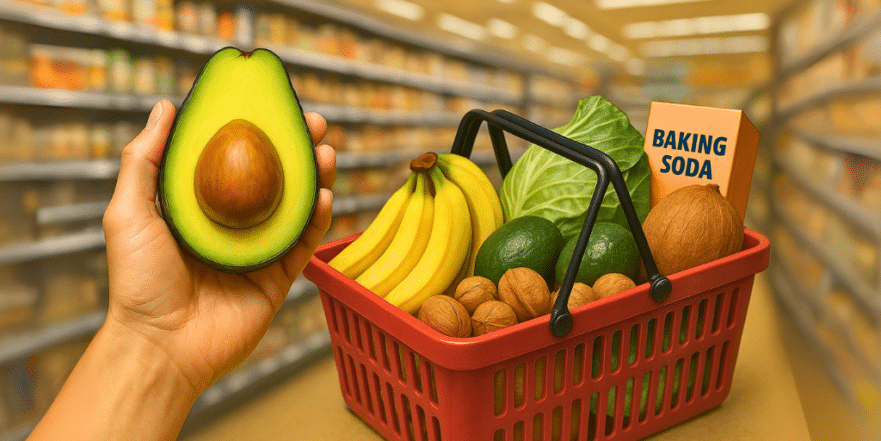
Thinking about going organic? It’s a great idea most of the time, as organic foods are grown without nasty synthetic chemicals like pesticides and herbicides. But here’s a little secret: not everything labeled organic is worth the extra cash. We’re talking about spending 50-80% more, and sometimes, it’s just not necessary. Let’s break down which foods you can skip buying organic and which ones you should definitely stick with.
What Does Organic Really Mean?
First off, let’s clear up what “organic” actually means. For foods, it means no synthetic chemical inputs. Think pesticides, insecticides, herbicides, and fungicides – those are the bad guys that can build up in your body. For animal products, it means the animals are fed organic feed and aren’t given antibiotics. There are a few levels of organic labeling:
- “Foods made with organic ingredients”: At least 70% of the product is organic.
- “Organic”: At least 95% of the ingredients are organic.
- “100% organic”: All ingredients are organic.
It’s also worth noting that some things, like hydroponically grown vegetables (grown in water with minerals, not soil), can be certified organic. While they might be organic, the lack of soil microbes means it’s not quite the same as soil-grown produce. And a word of caution: organic junk food is still junk food! Organic Pop-Tarts, for example, have the same amount of sugar and starch as regular ones, so the organic label doesn’t make them healthy.
Key Takeaways
- Not all organic foods are worth the premium price. Focus your organic spending on items that are heavily sprayed or have thin skins/shells.
- Foods with hard shells or peels, or those that are naturally protected, are generally safe to buy conventional.
- “Organic” doesn’t always mean “healthy”; watch out for organic processed foods high in sugar or starch.
- Non-GMO is not the same as organic; non-GMO foods can still be treated with herbicides like glyphosate.
Foods You Can Skip Buying Organic
Here are 13 foods where you can likely save your money and buy the conventional option:
- Sea Salt: Sea salt is a mineral. Pests don’t eat it, so it’s not treated with pesticides. Just choose a good quality sea salt from a reputable source.
- Wild-Caught Salmon: It’s pretty much impossible to control what a wild fish eats in the ocean. The “organic” label here is mostly marketing hype.
- Avocados: While conventional avocados are sprayed, their thick, hard shell acts as a great barrier. Very little pesticide residue makes it through.
- Baking Soda: This is sodium bicarbonate, an alkaline mineral. It comes from the earth and isn’t exposed to pesticides. Just make sure it’s food-grade.
- Mineral Water: The idea of “organic water” is a marketing ploy. Water isn’t treated with pesticides. Just pick a good brand of mineral water.
- Walnuts, Pecans, Brazil Nuts, Macadamia Nuts: These nuts have very hard shells that pesticides can’t penetrate. Stick with conventional versions to save money.
- Coconuts: Another food with a super hard shell. Pesticides simply can’t get through, so organic coconuts aren’t necessary.
- Cabbage: Cabbage isn’t heavily sprayed, and even if it is, you’re just going to peel off the outer leaves anyway. The pesticides don’t penetrate to the core.
- Bananas: The peel on a banana is a natural barrier that protects the fruit from pesticides.
- Game Meat: Animals like elk, wild boar, or venison are wild and not raised in controlled environments where their feed can be managed. The “organic” label doesn’t mean much here.
Foods You Should ALWAYS Buy Organic
Now, let’s talk about the foods where it really pays to go organic. These are often items that are heavily sprayed or have thin skins that let pesticides soak in:
- Peanuts: Peanuts have thin shells and grow in the soil. They are often treated with heavy sprays and fungicides to prevent mold, and the thin shell acts like a sponge for these chemicals.
- Strawberries: These berries have no protective shell, and chemicals can easily penetrate the fruit. They are like little sponges for pesticides.
- Coffee: Coffee is a heavily sprayed crop, often grown in tropical areas where mold and fungus are common. Opt for organic to avoid chemical residues.
- Tea: Similar to coffee, tea leaves are heavily sprayed. Because you’re consuming the leaf itself, you’re more likely to ingest chemicals. Go organic for tea.
- Chocolate: Chocolate is also grown in tropical regions prone to mold and fungus, leading to heavy chemical use. Choose organic chocolate.
- Cotton: This is a big one, especially for products that come into contact with your body. Conventional cotton is heavily sprayed. Organic cotton is recommended for tampons, clothing, and baby products to minimize exposure to pesticide residues.
- Spinach: Spinach is another crop that is heavily sprayed. If you eat a lot of spinach, choosing organic is a good idea.
- Apples: Apples are known to be heavily sprayed. While peeling might help, the peel itself can contain significant residues. Organic apples are a safer bet.
- Grapes: Grapes are also heavily sprayed, and their thin skin offers little protection. Buy organic grapes.
- Cherries: Cherries are another fruit that receives a lot of pesticide treatment. It’s best to buy them organic.
- Wheat, Oats, Lentils, Pulses: This is a critical category. Even if a product is labeled non-GMO, it doesn’t mean it wasn’t sprayed with herbicides like glyphosate (Roundup) as a drying agent. Organic certification means these chemicals are not used. So, for grains and legumes, always choose organic, not just non-GMO.
Remember, “organic” means non-GMO, but “non-GMO” doesn’t automatically mean organic. There’s a significant difference when it comes to pesticide use.
Source: Dr. Eric Berg

